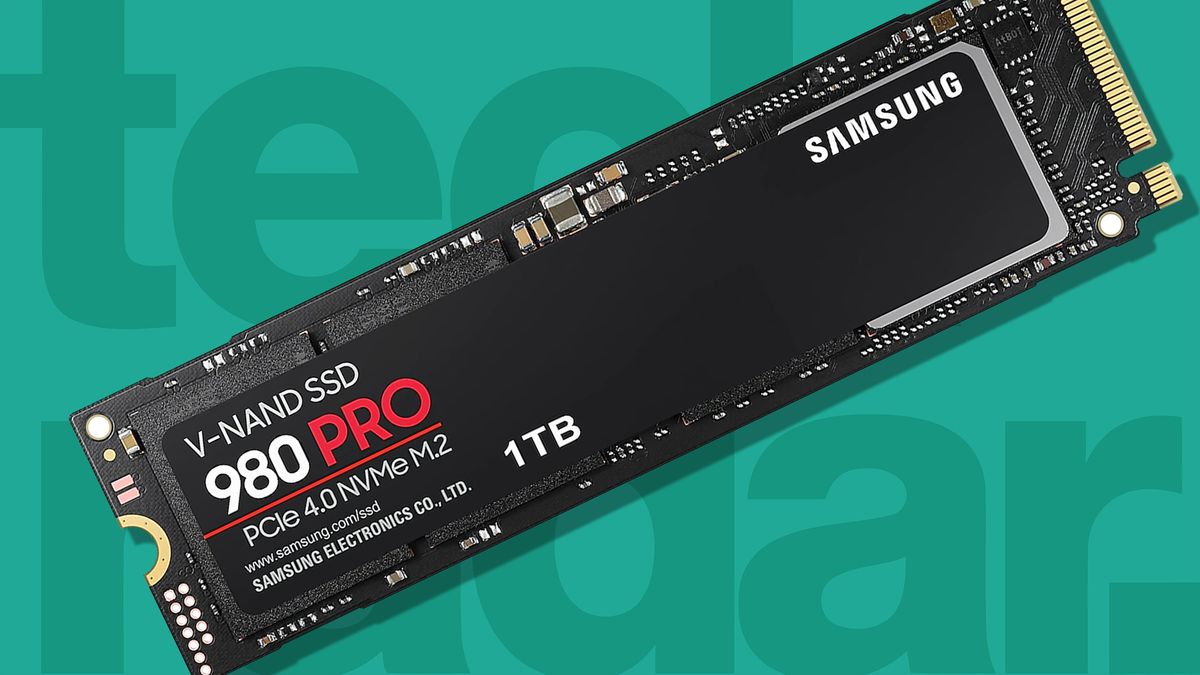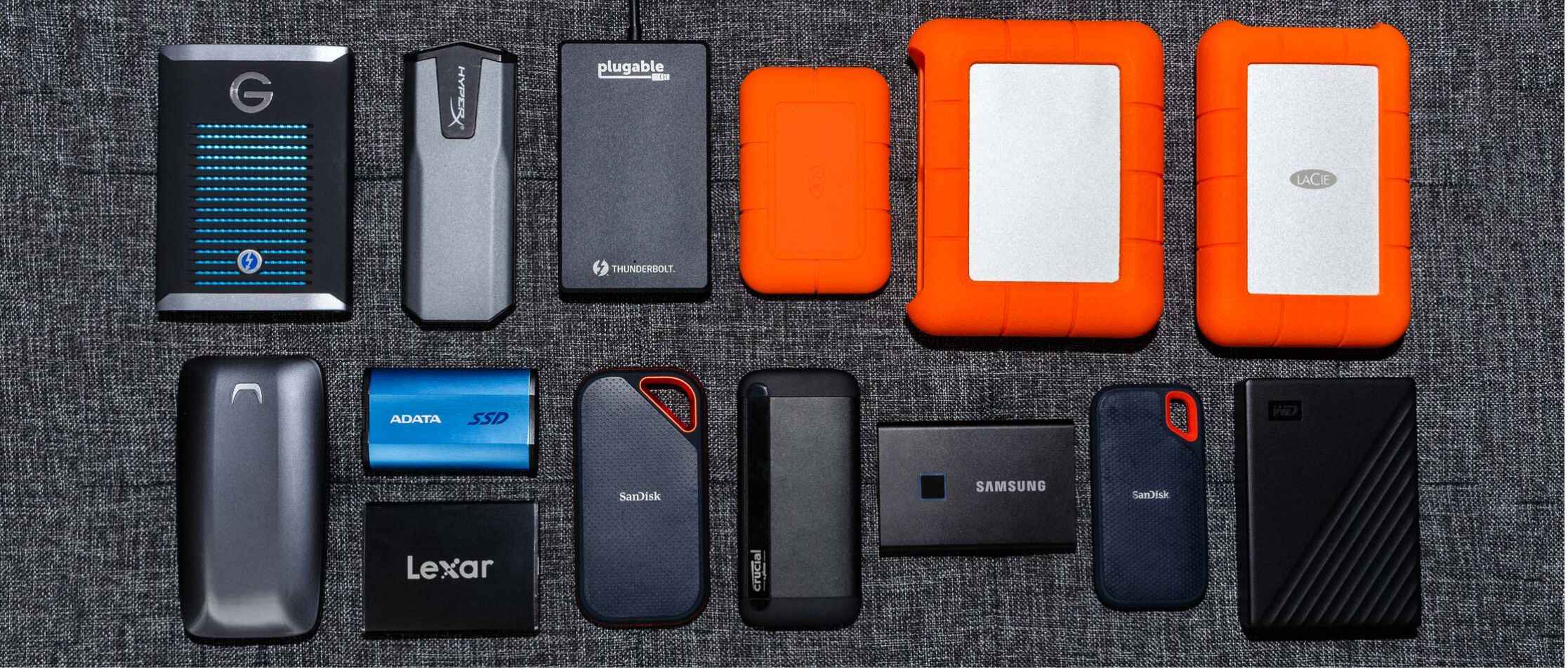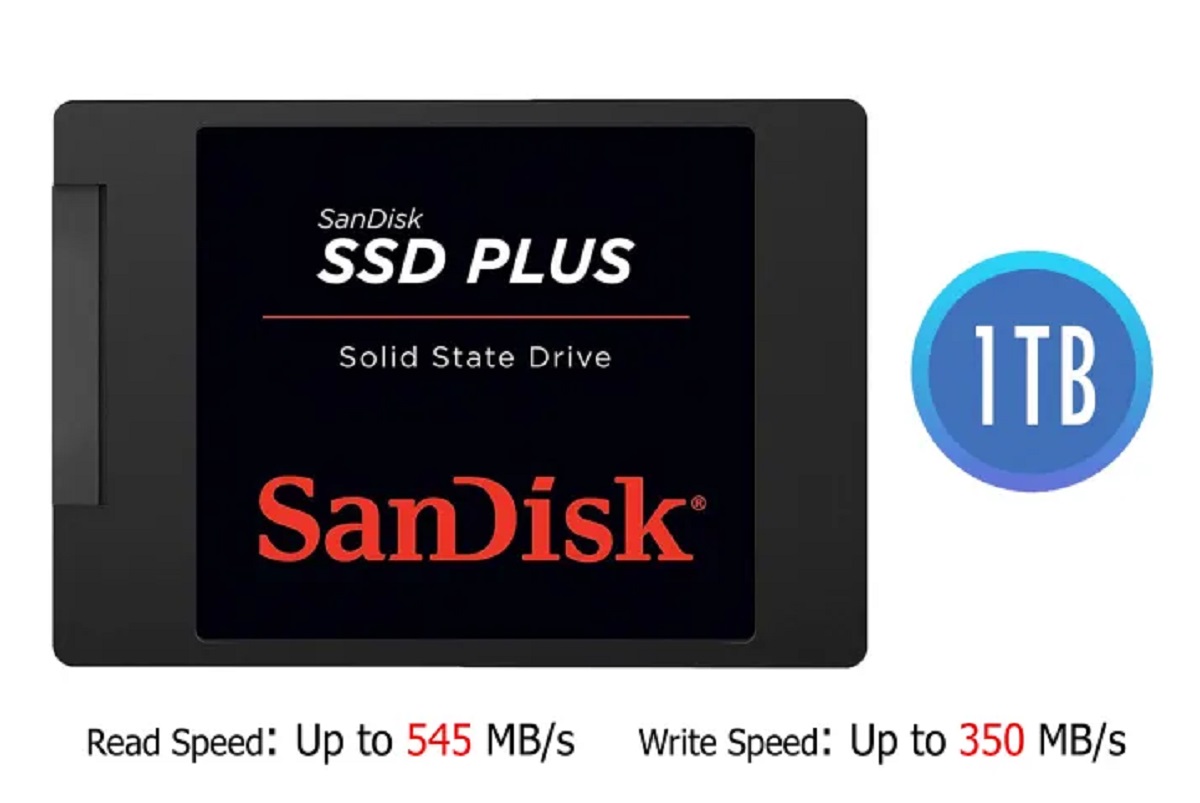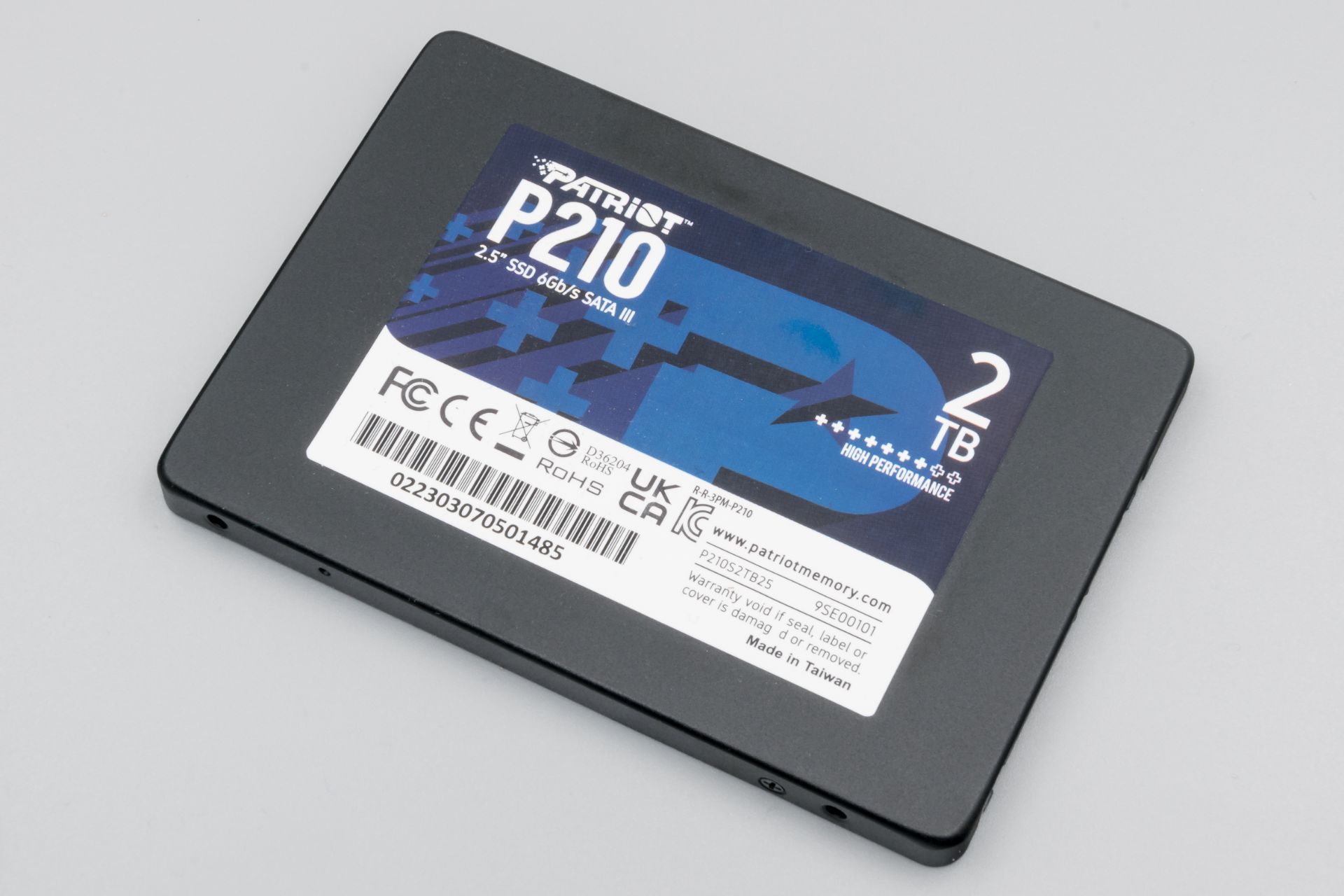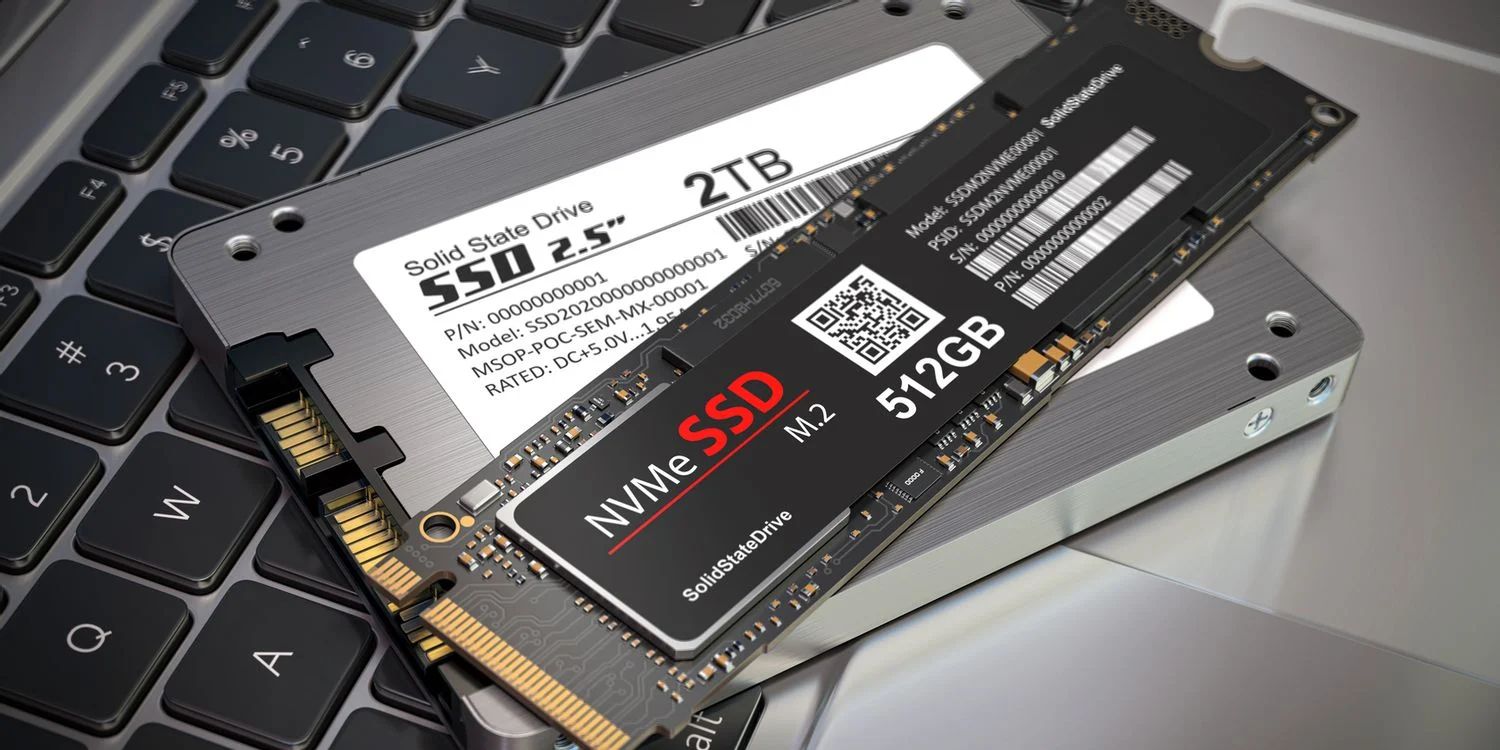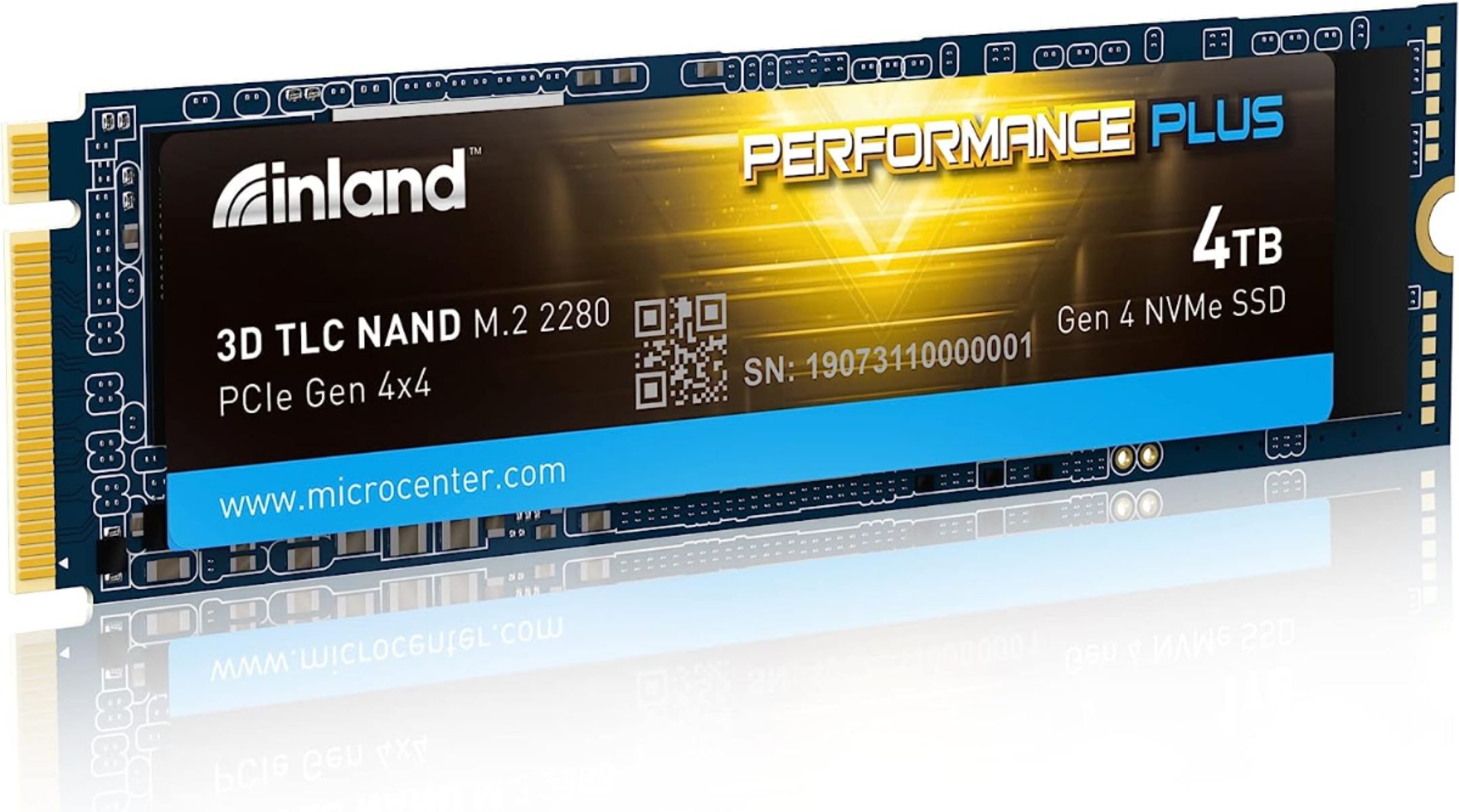Introduction
Welcome to the world of solid-state drives (SSDs), the revolutionary storage technology that has transformed the way we store and access data. Gone are the days of traditional hard disk drives (HDDs) with their spinning platters and mechanical components. Instead, SSDs utilize flash memory to offer faster speeds, improved durability, and greater energy efficiency.
As an SEO writer, it’s crucial to understand the ins and outs of SSDs, including their lifespan and endurance capabilities. In this article, we will dive into the topic of how many terabytes (TB) a consumer-grade SSD can write, exploring the factors that influence this metric and sharing tips to prolong your SSD’s lifespan.
But first, let’s take a moment to discuss SSD endurance. SSD endurance refers to the total amount of data that can be written to an SSD over its lifetime, commonly measured in terabytes written (TBW). This metric varies between different SSD models and is an important consideration for those who frequently write large amounts of data or use their SSD for demanding applications like video editing or gaming.
Understanding the lifespan of an SSD is equally important. An SSD’s lifespan is determined by factors such as the quality of its components, the workload it is subjected to, and how well it is maintained. By gaining insight into these factors, you can make informed decisions when selecting an SSD and optimize its performance and longevity.
So, how many TB can a consumer-grade SSD write? The answer to this question depends on several variables we’ll explore in the following sections. By understanding and considering these factors, you’ll be able to assess the endurance capabilities of your SSD and ensure it meets your specific needs.
What is SSD Endurance?
SSD endurance refers to the ability of a solid-state drive to handle a certain amount of data being written to it over its lifetime. It is commonly measured in terabytes written (TBW). Unlike traditional hard disk drives (HDDs), which can withstand high levels of read and write operations for extended periods, SSDs have a limited number of write cycles before their memory cells start to degrade.
SSDs achieve their fast data transfer speeds by using NAND flash memory cells to store and retrieve data. These memory cells have a finite lifespan, determined by the number of write/erase cycles they can endure. Each time data is written to the SSD, it involves a process of charging and discharging the memory cells. Over time, this process wears out the cells, leading to potential data errors and performance degradation.
To mitigate this issue, SSDs employ wear-leveling algorithms, which distribute write operations evenly across all memory cells. This helps prevent certain cells from wearing out faster than others, ensuring better overall endurance. Additionally, advanced error correction mechanisms are used to detect and fix any data errors that may occur.
Manufacturers of consumer-grade SSDs typically provide a TBW rating in their specifications, indicating the total amount of data that can be written to the drive before its endurance is reached. For example, an SSD with a TBW rating of 500 TBW can handle 500 terabytes of data being written throughout its lifetime. It is worth noting that this rating serves as an estimate and can vary depending on usage patterns, workload, and environmental factors.
SSD endurance is an essential consideration for users who frequently write large amounts of data or perform demanding tasks that involve frequent write operations. This includes professionals in the field of content creation, video editing, animation, and database management, among others. For everyday users with less demanding workloads, SSD endurance may not be as critical, as modern consumer-grade SSDs typically offer sufficient endurance for typical use cases.
Now that we have a clear understanding of what SSD endurance entails, let’s explore how different factors can influence the amount of data a consumer-grade SSD can write throughout its lifespan.
SSD Lifespan
When considering the lifespan of an SSD, it’s important to understand that it is different from SSD endurance. While SSD endurance refers to the amount of data that can be written to the drive, SSD lifespan refers to the overall longevity or durability of the SSD.
The lifespan of an SSD is determined by several factors, including the quality of its components, the workload it is subjected to, and how well it is maintained. Generally, consumer-grade SSDs have a lifespan that exceeds their endurance rating. This means that even after reaching their specified endurance limit, SSDs can continue to function for a significant period, although their performance may gradually deteriorate over time.
The quality of the components used in an SSD plays a crucial role in determining its lifespan. Higher-end SSDs often use more durable and reliable NAND flash memory cells, resulting in a longer lifespan compared to budget or entry-level SSDs. It’s important to consider this when choosing an SSD for your specific needs.
The workload you subject your SSD to can also impact its lifespan. Heavy write-intensive tasks, such as video editing, database management, or running virtual machines, can put more strain on the SSD and reduce its overall lifespan. On the other hand, lighter workloads, like web browsing, document editing, and media consumption, have less impact on the SSD’s longevity.
Maintaining your SSD properly can also help extend its lifespan. One important factor is ensuring that the SSD stays within its optimal operating temperature range. Excessive heat can degrade the SSD’s components over time. Additionally, regularly updating the SSD’s firmware and using trim or garbage collection features can help maintain its performance and overall health.
It’s worth noting that while SSDs have a limited lifespan, they typically outlast traditional hard drives, thanks to the absence of mechanical parts. HDDs are susceptible to mechanical failures, such as motor failures or read/write head crashes, which can result in data loss. SSDs, on the other hand, are more resistant to physical damage due to their solid-state nature.
To maximize the lifespan of your SSD, it is recommended to follow the manufacturer’s guidelines, avoid excessive write operations, and regularly backup your data to ensure its safety.
Now that we have explored the concept of SSD lifespan, let’s delve into the crucial question of how many terabytes a consumer-grade SSD can write and the factors that influence its endurance.
How many TB can a consumer-grade SSD write?
The amount of data that a consumer-grade SSD can write, often referred to as the endurance or TBW rating, varies depending on the specific model and manufacturer. Generally, consumer-grade SSDs have an endurance rating that ranges from 150 to 600 terabytes written (TBW). This means that you can write anywhere from 150 to 600 TB of data to the SSD before its endurance limit is reached.
It’s important to note that the TBW rating is an estimate provided by the manufacturer and should be considered as a guideline rather than an absolute value. The actual endurance of an SSD can be influenced by various factors such as workload intensity, write patterns, and environmental conditions.
The workload intensity plays a significant role in determining how long an SSD can last. If you frequently perform write-intensive tasks like video editing, 3D rendering, or running virtual machines, your SSD may reach its endurance limit more quickly. On the other hand, if your usage primarily involves lightweight tasks like web browsing, document editing, and media consumption, your SSD is likely to last longer.
Write patterns also affect the endurance of an SSD. SSDs perform best when write operations are spread evenly across the entire drive. Constantly writing to specific areas of the SSD can wear out those particular memory cells faster, potentially reducing overall endurance. Modern SSDs employ wear-leveling algorithms that distribute write operations evenly, helping to optimize endurance and extend the drive’s lifespan.
Environmental conditions can also impact an SSD’s endurance. High temperatures can accelerate the degradation of the NAND flash memory cells, leading to a shorter lifespan. It is important to ensure that your SSD operates within the recommended temperature range to maintain its performance and longevity.
Furthermore, it’s worth mentioning that even after an SSD reaches its TBW rating, it doesn’t suddenly become unusable. Instead, the SSD enters a state where the risk of data errors and performance degradation increases. However, modern SSDs often have additional overprovisioning built-in, which helps to extend their useful life even after the TBW limit is reached.
Choosing an SSD with a higher TBW rating can provide you with peace of mind if you engage in heavy write-intensive tasks or plan to keep the drive for an extended period. However, for typical consumer use cases, a consumer-grade SSD with a TBW rating between 150 to 600 TBW should suffice for several years before you need to consider replacing it.
Now that we have a better understanding of SSD endurance and how it relates to consumer-grade SSDs, let’s explore the various factors that can influence the endurance of an SSD.
Factors that Affect SSD Endurance
Several factors can significantly impact the endurance of a consumer-grade SSD, influencing the amount of data it can write over its lifetime. Understanding these factors can help you make informed decisions when selecting and utilizing an SSD. Let’s explore them below:
- Workload intensity: The workload or usage pattern plays a crucial role in determining the endurance of an SSD. Write-intensive tasks, such as video editing, database management, or running virtual machines, can lead to higher wear on the SSD’s memory cells, reducing its overall endurance. On the other hand, lighter workloads involving web browsing, document editing, and media consumption put less strain on the SSD and contribute to an extended lifespan.
- Drive capacity: The capacity of an SSD can impact its endurance. Generally, larger capacity SSDs tend to have higher endurance ratings compared to their lower capacity counterparts. This is because larger capacity SSDs have more NAND flash memory cells available for wear leveling, which distributes write operations across a larger pool, reducing wear on individual cells.
- Write patterns and efficiency: The way data is written to the SSD can affect its endurance. SSDs perform optimally when write operations are evenly distributed across the drive. Writing data in a random or fragmented manner can lead to unequal wear on memory cells, potentially decreasing endurance. Additionally, efficient file systems and operating systems that minimize unnecessary writes can help preserve SSD endurance.
- Environmental conditions: The operating temperature of an SSD can impact its endurance. High temperatures can accelerate the wear of the NAND flash memory cells, reducing the drive’s overall lifespan. It is crucial to keep the SSD within the recommended temperature range provided by the manufacturer to ensure optimal endurance.
- Overprovisioning: Overprovisioning is a technique used by SSDs to allocate a portion of the drive’s capacity for maintenance and background tasks. By providing additional free space, overprovisioning can help improve endurance by allowing wear leveling algorithms to work more effectively. SSDs with higher levels of overprovisioning often exhibit better endurance compared to those with lower levels.
Understanding these factors and assessing your specific needs and usage patterns can help you choose an SSD that offers the appropriate endurance for your requirements. Additionally, implementing best practices such as using efficient write patterns, optimizing system settings, and maintaining suitable environmental conditions can further enhance the endurance and overall lifespan of your SSD.
Now that we have explored the factors that influence SSD endurance, let’s move on to the next section where we will share some tips to help prolong the lifespan of your SSD.
Tips to Prolong SSD Lifespan
While solid-state drives (SSDs) offer superior performance and durability compared to traditional hard disk drives (HDDs), it’s essential to take proper care of your SSD to maximize its lifespan. By following these tips, you can ensure your SSD remains in optimal condition for an extended period:
- Ensure proper airflow and temperature: SSDs are sensitive to heat, so it’s important to maintain suitable operating temperatures. Make sure your computer or laptop has proper ventilation and airflow to keep the SSD cool. Avoid placing your system in areas with high temperatures or blocking the cooling vents.
- Enable TRIM and garbage collection: TRIM is a command that helps optimize SSD performance by allowing the drive to efficiently manage deleted or unused data. Ensure that TRIM is enabled on your operating system and that your SSD’s firmware supports it. Additionally, most modern SSDs have built-in garbage collection algorithms that automatically clean up unused blocks, enhancing performance and lifespan.
- Update firmware regularly: SSD manufacturers often release firmware updates to improve performance, stability, and compatibility. Stay up to date with the latest firmware for your SSD by periodically checking the manufacturer’s website and installing any available updates.
- Avoid excessive write operations: While SSDs can handle a significant amount of data writes, excessive write operations can still contribute to wear over time. Optimize your workflow to minimize unnecessary writes, such as by utilizing cloud storage, external drives, or optimizing your file management practices.
- Use power management settings: SSDs consume less power compared to HDDs, making them energy-efficient. However, adjusting power management settings in your operating system can further optimize power usage and reduce unnecessary wear on your SSD.
- Regularly back up your data: Like any storage device, SSDs can fail unexpectedly. It’s essential to regularly back up your data to an external drive or cloud storage service. This way, even if the SSD encounters an issue, you can easily recover your important files.
- Avoid sudden power loss: Sudden power loss can potentially cause data corruption or damage to the SSD. To minimize this risk, use an uninterruptible power supply (UPS) or a reliable power source to ensure a stable power supply to your system.
By following these tips, you can help prolong the lifespan of your SSD and ensure optimal performance throughout its usage. Remember that while SSDs have a limited lifespan, they typically offer greater longevity compared to HDDs due to their solid-state nature and absence of mechanical components.
Now that we have explored various ways to enhance SSD lifespan, let’s proceed to the next section, where we will compare SSD endurance across different brands and models.
Comparing SSD Endurance across Different Brands and Models
When it comes to solid-state drives (SSDs), the endurance ratings can vary significantly between different brands and models. It’s important to consider these factors when selecting an SSD to ensure it meets your specific endurance requirements. Here, we will explore how SSD endurance can differ across various brands and models:
1. High-end vs. Budget SSDs: High-end SSDs often offer higher endurance ratings compared to budget or entry-level options. This is due to the use of superior components and advanced technologies that enhance longevity. If endurance is a critical factor for your usage scenario, consider investing in a high-end SSD that offers a higher TBW rating.
2. NAND Flash Technology: Different SSDs utilize various types of NAND flash memory technology, such as Single-Level Cell (SLC), Multi-Level Cell (MLC), or Triple-Level Cell (TLC). SLC-based SSDs generally have higher endurance ratings compared to MLC and TLC, as SLC cells can endure more write cycles. However, SLC-based SSDs tend to be more expensive. MLC and TLC-based SSDs strike a balance between cost and endurance, making them suitable for most consumer applications.
3. Overprovisioning and Firmware: The level of overprovisioning and the efficiency of the firmware algorithms can impact SSD endurance. SSDs with higher levels of overprovisioning often exhibit better endurance, as more free space allows for improved wear leveling and longevity. Additionally, advanced firmware with efficient garbage collection and write optimization algorithms can further enhance endurance.
4. MLC vs. TLC SSDs: SSDs using Multi-Level Cell (MLC) NAND flash memory tend to have higher endurance ratings compared to Triple-Level Cell (TLC) SSDs. MLC cells can typically endure more write cycles before degradation. However, advancements in TLC technology have resulted in improved endurance ratings, making TLC SSDs suitable for most consumer use cases. It’s worth noting that TLC SSDs are typically more affordable compared to MLC SSDs.
5. Manufacturer Specifications: SSD manufacturers provide endurance ratings, often in the form of Terabytes Written (TBW), to help consumers understand the expected lifespan of their SSDs. These ratings serve as estimates and are based on industry-standard testing methodologies. It’s important to refer to these specifications when comparing different SSD models within a brand or across different brands.
When comparing SSD endurance across different brands and models, it’s crucial to consider your specific usage scenario and requirements. For most consumer applications, modern consumer-grade SSDs offer sufficient endurance for typical daily use. It’s important to balance cost, performance, and endurance when selecting an SSD that best suits your needs.
Now that we have compared SSD endurance across different brands and models, let’s move on to the concluding section of this article.
Conclusion
In conclusion, solid-state drives (SSDs) have revolutionized the storage industry, providing faster speeds, improved durability, and energy efficiency compared to traditional hard disk drives (HDDs). Understanding SSD endurance and lifespan is crucial for making informed decisions when selecting and utilizing an SSD.
We learned that SSD endurance refers to the amount of data that can be written to an SSD over its lifetime and is commonly measured in terabytes written (TBW). Consumer-grade SSDs typically have endurance ratings ranging from 150 to 600 TBW, although actual endurance can be influenced by factors such as workload intensity, drive capacity, write patterns, environmental conditions, and overprovisioning.
We also explored tips to prolong SSD lifespan, including maintaining proper airflow and temperature, enabling TRIM and garbage collection, updating firmware, avoiding excessive write operations, using power management settings, and regularly backing up data.
Comparing SSD endurance across different brands and models revealed that high-end SSDs often offer higher endurance ratings, SLC-based SSDs generally have higher endurance than MLC and TLC-based SSDs, and the level of overprovisioning and firmware efficiency can impact endurance. It’s important to consider these factors when choosing an SSD that aligns with your specific needs.
Ultimately, selecting the right SSD involves striking a balance between cost, performance, and endurance. Modern consumer-grade SSDs offer sufficient endurance for typical use cases and can provide years of reliable performance.
Whether you are a professional requiring high endurance for intensive workloads or a casual user seeking improved performance, understanding SSD endurance and implementing best practices can help you make the most out of your SSD investment.
We hope this article has provided valuable insights into SSD endurance and lifespan, empowering you to make informed decisions and optimize your SSD’s performance and longevity.







